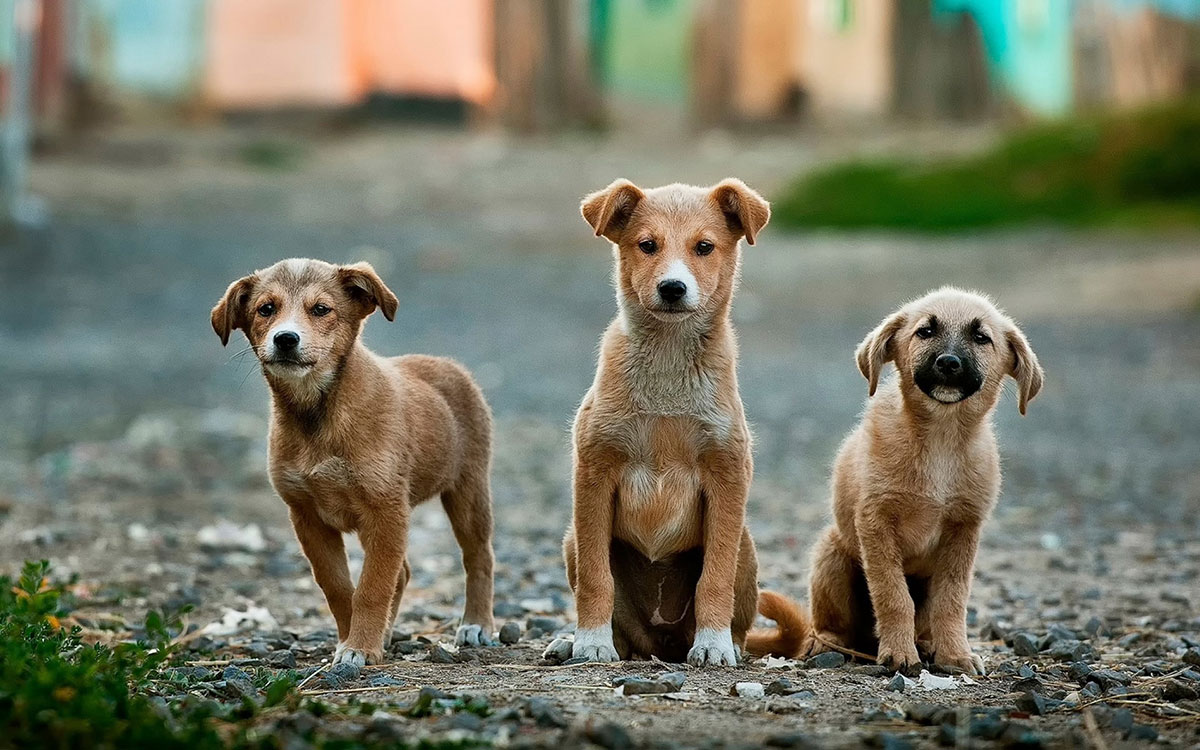Your dog is talking to you every single moment of every day, yet most of us are terrible translators. We miss the subtle signals, misread the obvious ones, and sometimes completely turn their messages upside down. If you’ve ever thought your dog was being “stubborn” when they were actually stressed, or assumed their tail wagging meant pure joy, you’re not alone in this communication breakdown.
Recent research indicates that humans frequently misinterpret their canine companions’ emotions. This misreading stems from projecting human feelings onto dogs and relying heavily on contextual cues rather than observing the dogs’ actual behaviors. The truth is, dogs have their own complex language that’s often nothing like ours.
Think about it. Your dog might be desperately trying to tell you they’re uncomfortable, scared, or overwhelmed, while you’re completely oblivious to their pleas. Understanding these misread signals isn’t just about being a better pet parent; it can prevent stress, avoid bites, and create a deeper bond with your furry best friend. Let’s dive into the eight most commonly misunderstood dog body language signals that every owner should master.
Tail Wagging Doesn’t Always Mean Happiness

The biggest misconception about dogs might be that a wagging tail automatically equals a happy pup. All a wagging tail means is that the dog is emotionally aroused. It could be excitement, but it could be frustration or worse. Your dog could be wagging their tail while feeling anxious, overstimulated, or even aggressive.
Basically, the faster the wag, the more aroused the dog. A faster, twitch-like wag indicates a higher level of arousal, possibly in a negative way. In reality, a wagging tail only means that the dog is aroused. If it is standing upright, then this is more a sign of a tense dog. If it is positioned lower and the movement of the tail is relaxed and wide from left to right, then it is probably a friendly signal.
Yawning Often Signals Stress, Not Tiredness

When your dog yawns during a training session or at the vet’s office, they’re probably not sleepy. Dogs yawn when they are tired, but also to communicate emotions, manage stress, or as a form of submission in social situations. This is not surprising, given that yawning has been coined a “calming signal” in dogs by some top leaders in dog behavior.
If your dog yawns in a situation where they seem uncomfortable or uneasy, it can be a way to calm themselves or alert others they are not comfortable. If stress is the cause, you may notice your dog trying to appear smaller, hiding, and/or vocalizing (whining or whimpering). Dogs may exhibit repetitive or exaggerated yawns when they are feeling stressed or uneasy in a particular situation. This behavior is their way of attempting to self-soothe and communicate their emotional state to others.
Lip Licking Isn’t About Food

Lip-licking is another bit of dog body language that people often misinterpret. Just like people, dogs will lick their lips after a delicious meal, but they’ll also do it when they feel anxious. That quick tongue flick might be so fast you almost miss it, but it’s actually a crucial stress signal.
Another example of dog body language that can be confusing is lip-licking. Dogs, like people, lick their lips after eating something they like, but they will also lick their lips when they are nervous. The tongue flick might be challenging to detect at times since it is so rapid. Your dog is not indicating a desire to lick your face, but instead, they are trying to show they are unhappy about a particular situation.
The “Guilty” Look Is Actually Fear

A good example of this is the so-called guilty look. You often see videos on social media in which a dog avoids eye contact with humans, for example turning its head slightly to the side. If this happens after the dog has done something they shouldn’t have, the owner may classify this as indicative of shame or guilt.
Often, submissive or appeasement signals are misinterpreted by owners to be indicative of “guilt” following an undesirable behavior. In truth, dogs that display submissive postures towards their owners are likely responding to discernible human body language or past association with punishment and are attempting to lessen predictable forthcoming punishment based on previous experience. In reality, dogs avoid eye contact as a kind of deescalation behaviour. It indicates that they do not want a confrontation.
Whale Eye Shows Anxiety, Not Attitude

Whale eye, also called half-moon eye or dorsal gaze, refers to a dog expression when the whites of their eyes, or sclera, are seen more than the pupil. Dogs communicate with all parts of their body, including their eyes, and this expression typically is a sign of fear, stress, or anxiety.
When your dog turns their eyes to the side like that without moving their head sideways, showing a lot of white or sclera, it’s usually a sign of anxiety, stress, or fear. For instance, a dog that’s unsure of a new animal might give it this side-eye look to size the situation up, or as an instinctual reaction to a potentially imminent threat. Dogs display whale eye when they are tense, stressed, anxious, or frightened. The dog may also show other symptoms of anxiety or distress such as a stiff body posture, lip licking, yawning, low tail carriage, or a tense jaw.
Rolling Over Can Signal Extreme Submission

Rolling over is often a sign of extreme submission and may involve urination. Submissive rolling can be a sign of fear and/or deference and should not be misinterpreted as stubbornness or solicitation of petting. When your dog flops onto their back, they might not be asking for belly rubs at all.
Progression of submissive signals includes: low crouching, raising a front paw, lying down, and rolling over to expose the abdomen. This behavior developed from puppyhood when a pup would present to an adult in the group. If your dog rolls over during stressful situations or seems tense while on their back, they’re likely feeling overwhelmed rather than playful.
Showing Teeth Doesn’t Always Mean Aggression

The concept of dogs smiling can be perplexing. While baring teeth usually signals aggression, a true doggy smile, known as a submissive grin, is quite the opposite. Accompanied by a loose, wiggly posture, this expression denotes a happy, peaceful demeanor. The dog’s front teeth are displayed similarly, but the context and overall attitude convey friendliness rather than aggression.
Participants were shown pictures of dogs, for example showing bare teeth, which signals high levels of distress. The children especially misinterpreted that as a smiling and happy dog. The key difference lies in the dog’s overall body language. A relaxed, wiggly dog showing teeth is vastly different from a stiff, tense dog baring their fangs.
Panting Can Indicate Stress Beyond Heat

While panting is a normal physiological response to regulate body temperature, it can also be a way for dogs to cope with anxiety or discomfort. When dogs are in stressful situations, their heart rate increases, and they may pant excessively to cool themselves down. This type of panting is often more rapid and shallow compared to panting caused by physical exertion.
If your dog is panting despite not being hot, this is often a sign of stress, anxiety, or fear. Some of the early markers of stress that I regularly see include excessive panting, yawning, or licking of the lips. Context matters enormously here. A dog panting in an air-conditioned room or after minimal activity might be telling you they’re emotionally overwhelmed.
Conclusion

Learning to read your dog’s true body language transforms your relationship from guesswork to genuine understanding. In general, accurately assessing the body language of dogs is quite beneficial as it allows humans to react appropriately to emotions and intentions of the dog. Thus, it fosters successful companionship between the dog owner and pet. These misinterpreted signals are your dog’s way of communicating their needs, fears, and comfort levels.
The next time you see your dog yawn during training, show whale eye around strangers, or avoid eye contact after an accident, remember they’re not being defiant or dramatic. They’re simply speaking a language we’ve been too busy to learn. Take a moment to really observe the whole picture, consider the context, and respond with empathy rather than frustration.
What surprised you most about these commonly misunderstood signals? Tell us in the comments which one you’ve been misreading all along!

Andrew Alpin from India is the Brand Manager of Doggo digest. Andrew is an experienced content specialist and social media manager with a passion for writing. His forte includes health and wellness, Travel, Animals, and Nature. A nature nomad, Andrew is obsessed with mountains and loves high-altitude trekking. He has been on several Himalayan treks in India including the Everest Base Camp in Nepal.






